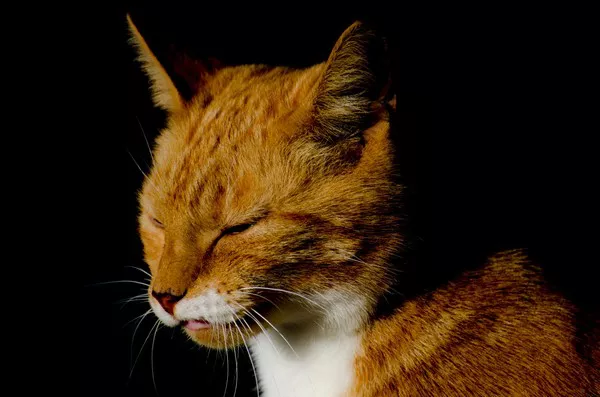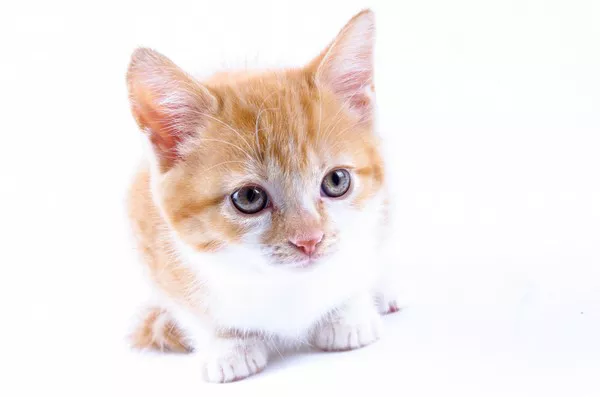Feeding a kitten is one of the most important tasks for anyone caring for a young feline. Newborn and young kittens, especially those that are orphaned or unable to nurse from their mother, require the right nutrition to thrive and grow into healthy, strong adults. In these cases, kitten milk replacer (KMR) becomes a vital tool in your cat feeding routine. This comprehensive guide will help you understand the importance of kitten milk replacer, how to properly use it, and how to ensure your kitten is receiving the best care during its critical developmental stages.
Why Kittens Need Milk Replacer
Kittens under 4 weeks of age rely on their mother’s milk for nourishment. Mother’s milk provides essential nutrients, antibodies, and hydration. However, some kittens may become orphaned or rejected by their mothers, while others may be born into situations where the mother cannot adequately care for them. In such cases, a kitten milk replacer is a suitable alternative, designed to mimic the nutritional profile of a mother cat’s milk as closely as possible.
Kitten milk replacer provides the necessary proteins, fats, vitamins, and minerals that kittens need during their early stages of life. Unlike cow’s milk, which can cause digestive upset and malnutrition, kitten milk replacers are specially formulated to support the healthy growth and development of kittens.
Choosing the Right Kitten Milk Replacer
When it comes to cat feeding, choosing the right kitten milk replacer is crucial. Not all milk replacers are created equal, and some may not provide the correct balance of nutrients. Here are some key factors to consider when selecting the best kitten milk replacer:
1. Formulation
Look for a kitten milk replacer that is specifically designed for kittens. It should contain high levels of protein and fat, as kittens need these nutrients for rapid growth and energy. The formulation should also be easily digestible to avoid upsetting the kitten’s delicate stomach.
2. Types of Milk Replacers
Kitten milk replacers come in several forms, including:
Powdered: The most common form, powdered milk replacer needs to be mixed with water before feeding.
Liquid Concentrate: A pre-mixed version that requires dilution before use.
Ready-to-Use Liquid: The most convenient form, as it doesn’t require any mixing or preparation.
3. Brand Quality
Choose a reputable brand that is well-known in the pet care industry. Look for products that have been tested and recommended by veterinarians. Some popular and trusted brands include Hill’s Pet Nutrition, Royal Canin, and PetAg.
4. Avoid Cow’s Milk
Never use cow’s milk as a substitute for kitten milk replacer. Cow’s milk is not only nutritionally inadequate for kittens but can also cause diarrhea and dehydration due to its high lactose content.
How to Prepare Kitten Milk Replacer
Once you’ve selected the right kitten milk replacer, it’s time to prepare it properly. Incorrect preparation can lead to digestive issues or nutritional imbalances, so it’s important to follow the instructions carefully.
1. Read the Instructions
Each kitten milk replacer will come with specific instructions, so it’s essential to follow them closely. This includes the correct mixing ratio of powder to water (for powdered milk replacers) or the proper dilution of concentrate.
2. Use Clean Utensils
Always use clean utensils when preparing kitten milk replacer. This includes measuring cups, bottles, and nipples. Bacteria can easily grow on unclean equipment and cause infections or illness in your kitten.
3. Mixing the Powder
If you are using powdered kitten milk replacer, mix it thoroughly with warm (not hot) water. The water should be around body temperature, approximately 100-102°F (37-39°C). If it is too hot, it can burn your kitten’s mouth, and if it is too cold, the kitten may not want to drink it.
4. Shake or Stir Well
After mixing the milk replacer and water, shake or stir the bottle until the powder is completely dissolved. Any lumps can lead to digestive upset, so be sure the mixture is smooth.
5. Check the Temperature
Before feeding, always test the temperature of the milk replacer. Place a drop on the inside of your wrist to ensure it feels warm, not hot. If it’s too hot, allow it to cool before offering it to your kitten.
How to Feed a Kitten Milk Replacer
Now that you’ve prepared the milk replacer, it’s time to feed your kitten. Follow these guidelines to ensure you are feeding your kitten correctly and safely.
1. Use the Right Bottle and Nipple
A kitten bottle with a small, soft nipple is essential for proper feeding. The nipple should mimic the mother cat’s teats to encourage the kitten to suckle naturally. Be sure to use a nipple size that is appropriate for the age and size of your kitten. Newborn kittens will need a smaller nipple, while older kittens can handle a larger one.
2. Positioning the Kitten
When feeding your kitten, always hold them in a natural, upright position. Avoid feeding the kitten on its back, as this can cause aspiration (milk going into the lungs instead of the stomach), which can lead to serious respiratory problems. Support the kitten gently and hold the bottle at a slight angle to encourage it to latch onto the nipple.
3. Feeding Frequency
Newborn kittens, especially those under two weeks of age, need to be fed every 2-3 hours, including overnight. As they grow, the feeding frequency will decrease. At around 3-4 weeks of age, you can start spacing out the feedings to every 4-6 hours. By the time they reach 6-8 weeks, they should be eating solid food, and bottle feeding can be gradually phased out.
4. Allow the Kitten to Suckle at Its Own Pace
Avoid forcing the kitten to drink. Let them suckle at their own pace, and take breaks if necessary. Don’t rush the feeding process, as kittens need time to learn how to suck and digest the milk properly.
5. Observe the Kitten’s Behavior
While feeding, observe the kitten for signs of distress, such as coughing, gagging, or refusing to suck. If the kitten shows any of these signs, stop feeding and reassess the situation. If necessary, contact your veterinarian for guidance.
Signs of Overfeeding or Underfeeding
Proper feeding is key to the kitten’s health, but overfeeding or underfeeding can lead to serious issues. It’s important to understand the signs of both.
- Overfeeding Symptoms
- Swollen abdomen or bloating
- Vomiting after feeding
- Lethargy or discomfort
- Diarrhea
- Underfeeding Symptoms
- Crying or constant meowing, which may indicate hunger
- Slow or no weight gain
- Weakness or lethargy
- Inability to latch onto the bottle or poor sucking reflex
If you notice any of these symptoms, consult your veterinarian to ensure that your kitten is receiving the right amount of nutrition.
Transitioning to Solid Food
Around 4-5 weeks of age, kittens should start to transition from kitten milk replacer to solid food. This transition is essential for their growth and development, as they begin to develop the skills necessary to eat adult cat food.
1. Introduce Wet Kitten Food
At first, offer wet kitten food mixed with kitten milk replacer to make the transition easier. Gradually decrease the amount of milk replacer over the next week.
2. Introduce Dry Kibble
Once your kitten is eating wet food regularly, you can begin offering dry kitten kibble. Make sure the kibble is small enough for their little mouths to handle.
3. Monitor the Transition
During the transition, keep a close eye on your kitten’s appetite and stool consistency. If they are having trouble adjusting, you may need to slow the process down. Always consult your veterinarian if you are unsure.
Important Tips for Successful Cat Feeding
Hygiene is Crucial: Always clean the kitten’s bottle, nipples, and your hands thoroughly before and after each feeding.
Stay on Schedule: Consistent feeding schedules will help the kitten thrive and grow properly.
Watch for Dehydration: Kittens can dehydrate quickly, so ensure they are drinking enough milk replacer.
Seek Veterinary Care if Needed: If the kitten isn’t feeding properly, has trouble gaining weight, or shows signs of illness, contact a veterinarian immediately.
Conclusion
Feeding a kitten milk replacer is a critical part of cat feeding when a mother cat is unavailable. By carefully choosing the right milk replacer, preparing it properly, and following the correct feeding techniques, you can help ensure that your kitten receives the best care and nutrition. As your kitten grows, be prepared to transition them to solid food, and always monitor their health and development closely. Remember, early nutrition and care lay the foundation for a healthy, happy cat.
Related Topics



























